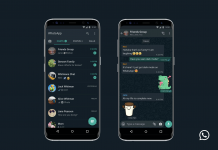Google Chrome are looking for means to protect their users from fake and tricky download buttons seen in some shady corners of the web. Read all about their new protection measures, in this story!
You know the drill in some of the Internet’s shadiest websites: users access the site, and whenever they want to download something, anything, an endless barrage of buttons start showing up offering downloads, and most of them are spyware, ads, and links to things you would rather not download. Out of all those buttons, one is real, the others are a one-way ticket to spyware-land – a real Russian roulette of malware. The Google team is tired of the frustration this model produces on some users and how it brings down the overall browsing experience, so they have announced a new feature for their popular navigator Chrome called “Safe Browsing”. With this feature, users that make use of these techniques to trick users into downloading unwanted things will be flagged so users don’t have to suffer through them. So, Chrome expects to kill this business model entirely, as its all based on deceit and tricking users. No more fake Flash or Java updates? We say good riddance. Will it work? That remains to be seen, but we approve of the idea and what it aims to do.
This change is all part of Google’s new social engineering policy which starter last November. Starting with the next update, if Google detects this kind of engineering in any website (that is, fake downloads, tricky ads and buttons), users will be redirected to a warning page featuring a button where they can choose whether to take the risk and visit this website anyways, or to be redirected somewhere else. As it happens with all new features, we are sure this will start some discussions, and there will be some problems with its implementation, but Google themselves have set up a help page so websites that consider themselves to be wrongly targeted by the browser can expose their situation and solve the issues in the code – and this is all meant to give the user the best possible experience in the end, so it’s not like they have bad intentions. We hope other browsers such as Firefox, Opera, or Edge take a page off of Google’s book and start adding these types of features so we can let our parents or children browse freely, without having to worry about whether they will fill up our computers with malware or not.
Be social! Follow Walyou on Facebook and Twitter, and read more related stories at What is Google Chrome Helper on Mac, and what does it do? and Sub-$200 CTL H4 Chromebook Packs 4GB RAM.












